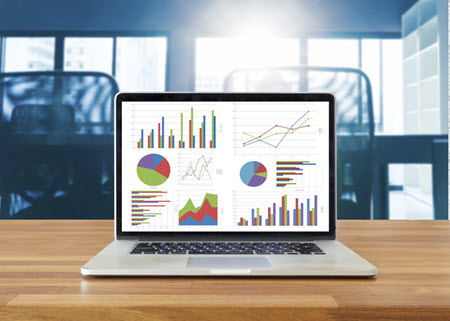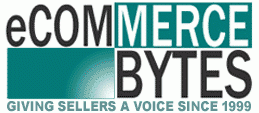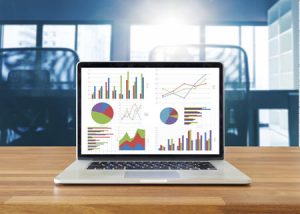
You have just spent the whole day sourcing and found the most amazing treasure to sell on eBay, but there’s one big problem. You have no idea what it is worth. You might not even know what it is. It looked expensive and was clearly an antique. It was made by a good company, and was nicely marked with a rich deep patina. And, best of all, it was only a dollar. So, you bought it.
This can be a dilemma for many online resellers, because researching whatever newly acquired treasure you find can be a major time-consumer. For many new resellers, and even long-time sellers, researching an item can take up far more time than it took to find the item.
Sellers should already know an item will almost certainly sell for far more if it is properly identified and priced accordingly. Proper research relies on you being able to find the most relevant data, which will help you to correctly identify and price your newly found treasure. The more data you can access the more successful you will be. You might say, “He who holds the most data wins,” or more aptly spoken, “he who holds the best data wins.” This can take up a lot of your time. The more time you spend researching means the less time you will have to source and sell other items.
For those new to reselling, just trying to determine the best spot to find that data can be a daunting task. Even lifelong resellers can miss numerous key information gathering options that could save them time, and make them more money. Many sellers may look for a paid application or some monthly service for answers. There are plenty of applications and services offering you all sorts of data these days, but these options can be limited, and a good portion of the time the same information can be found for free elsewhere.
Luckily, there are plenty of free options available to identify your latest acquisitions and to help you determine what it is worth, without even leaving the platform on which you are selling. Amazon, for example, has an item ranking system across the platform broken down by category, which gives most resellers a good idea on the value of their items. It can also help you to determine how quickly the item might sell.
Amazon also offers a free cell phone application that is extremely useful in determining the fees and potential profits prior to even purchasing an item. For many sellers, those two features can be enough to run a very successful business on the platform.
eBay is pretty straightforward with their data, as well. Anyone with an account can access 90 days worth of completed and sold listings, which is how many resellers research their items for pricing them.
Terapeak is another exclusive feature available for free to anyone with a paid Basic, Premium, Anchor, or Enterprise store on eBay’s platform, but unfortunately those without a store will have to pay to access this feature. However, with Terapeak you can look at a further nine more months’ worth of completed and sold listings, giving you a far better date range of data.
Having more data is always better, and with the added nine months’ worth, you can better estimate what an item could potentially sell for. For some scarce or rare items, they may only sell once or twice a year, and you may not be able to find one in the completed or sold listings, due to its 90-day limitations. The only way you would know the price is if the item you were looking up happened to sell in the past 90 days, otherwise you would have to use Terapeak to look over a longer date range. I personally use it for researching nearly every item I plan on listing on the site and have found it to be an indispensable tool.
Terapeak also gives you far more data than just the price. It is the best way to determine the yearly sell-through rate of any given item. You can also figure out, fairly quickly and easily, which eBay selling format will net you the highest profit. You can simply calculate how many sold with the auction format versus the “Buy It Now” format. In most cases, the “Buy It Now” (or BIN) option can be the best choice. A “BIN” will almost always net more money than what you might have sold it for with the auction format. So, choosing the right format is an important step in assessing your items’ potential profits.
Another feature worth mentioning about Terapeak is its trending data. With a click or two of your mouse button, you can sort and sift through even more information. This mostly comes in handy for replenishable items, and items you can specifically target for sourcing. Many sellers who deal in wholesale, or who do retail arbitrage, find it a very useful feature. It can help you determine which items are hot right now, and where their prices may go in the near future.
eBay offers one more big tool that nearly everyone seems to miss. Sellers in the U.S. seem to forget that eBay has more than one site. I routinely will travel to eBay’s United Kingdom site (ebay.co.uk) to find a price of an item made and predominantly sold in England, or eBay France (ebay.fr) to determine the value of a French book or collectible. eBay has well over a dozen other sites besides the U.S. version that are free to use. You can also watch an item on a foreign site, and it will show up in your normal watch list in the U.S. This is helpful when you are waiting for an item to end in order to see what it sells for.
Etsy, the last of the top three reselling platforms, seems to give sellers the most problem. Unlike eBay, you can’t search sold items – but you can find the sold items of a specific shop. Sometimes I’ll go to some of the really big Etsy sellers in certain items and check their sold items.
Another challenge – Etsy does not openly show you the final selling price of items, but it is still easily available with just a few clicks. A click of your right mouse button followed by a click on “View Page Source” of the listing in question will open up the web page’s source code. Next, hitting the “Ctrl” and “F” key at the same time will open the “Find” feature box. By typing the word “price” in that box you will be magically taken to the sold price of the item.
There are applications out there that will do this for you, but why pay when you can easily do it yourself? I also use eBay to price out Etsy items. Usually the prices are about the same for most of the collectibles and vintage items I sell, regardless of the platform.
Researching your items and finding good data doesn’t need to take that long. Once you know where to find the most relevant data, you can quickly cut your time down, and still be able to correctly price your items for the maximum profit possible. We are all here to make money, so why waste any more time than you have to?




Hi Don, I am a HUGE Fan! I watch your videos religiously for years now. This is a great article but I would like to mention a free price comparison tool for secondhand/vintage: SellHound’ Fetch Engine. I am the founder of SellHound (so clearly I’m biased… ;).. but, for example, in a recent video you spoke about Fontanini Nativity. On SellHound’s search, you can search multiple marketplace both Current and Sold prices in one search: https://aggregator.sellhound.com/?category=21&search-term=fontanini&search-condition=used
You can dig deeper by clicking into the marketplace.
Let me know what you think. Best, Suzanne
I would really want to know what you think or worthpoint and how it compares to terapeak? And does one need a separate site for artwork such as Askart to find values of specific artists?
I want to comment about WORTHPOINT – which is way better than Terapeak if only because Worthpoint lists eBay sold items from years and years ago and keeps them listed. Another great point about Worthpoint, especially for niche category researchers, is that many eBay listings are incorrectly described or outright FAKES. Worthpoint is continually policing listings and will remove bad listings if you flag them and provide documentation proving errors. (Maybe Terapeak does this too, I do not know, I have never even looked at it.)
And good gosh, don’t forget about Kovels – https://www.kovels.com/ their print price guides were the Bible for so many years; they are now online.
Worthpoint is a fantastic service!